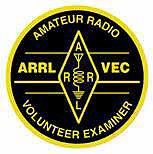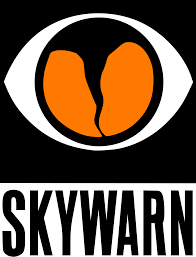This material was inspired by "Seven Tips For Better Repeater Operating" published in ARRL's "On The Air" magazine. I've consolidated some of theirs, left some off, and added some of my own.
In previous presentations I've discussed how we often become complacent, or sloppy, in maintaining or testing our equipment for proper operation. Without maintenance and testing we often discover "sudden" problems with our equipment that really had been creeping up on us over time; usually poor antenna connections, dirty power connectors, etc.
Likewise, over time we can develop some poor habits when operating over a repeater, or as a participant in a net, forgetting (or maybe never learning) good repeater courtesy and operation. Here are a few things to keep in mind when participating in a net or "rag chewing" on the drive to the grocery store. We've all been guilty of some of these at some point in time.
1) Pause after keying and before speaking. Believe it or not, the repeater does not begin retransmitting what your are saying the moment your thumb hits the transmit button on the microphone! It's true. Not only that, it doesn't start retransmitting at the moment you actually push the PTT (Push-To-Talk) button. It actually takes a little time for the repeater to recognize a signal is coming in, check for the tone signal, and then engage the transmitter.
It is not uncommon at all to hear someone call out on the repeater and have the entire first and even second character of their call sign be clipped off. Likewise, the first word or two can be clipped if you don't give the repeater a chance. Also, the repeater needs to ID occasionally, so that pause lets that happen. For those of us that cross-band the problem is doubled, because our cross-banding radio must perform the same functions the repeater does before it starts retransmitting to the repeater!
2) Pause after the other person has stopped talking before you start to transmit. This is probably the biggest no-no we are all guilty of at some point. The repeater needs a moment to rest and possibly ID, and you want the timeout timer to reset so it doesn't cut you off. Not to mention, there may be someone out there who want's to join in but never gets a chance. So when its your turn to talk, give it a couple seconds AFTER the repeater drops. You can usually hear the "squelch tail" when the repeater drops, so take a two count after that. This allows anyone out there to put their call sign out, the repeater to reset the timeout timer, and even gives it a break from transmitting. You'd be surprised how hot a repeater transmitter can get when it's transmitting almost constantly during a round-table. You may have receive-squelch enabled, in which case you may not hear a squelch tail, so you'll need to make yourself pause an extra second or two for the repeater transmitter to drop.
3) Remember that timeout timer I just spoke about? We all need to be attentive to it. If you "quick key", meaning you immediately key up when the other person stops talking, the repeater will not reset the timeout timer. The timeout timer resets when it has completely dropped, in other words, when you hear that "squelch tail". If you pick up at the end of someone else's transmission without letting the repeater drop, that timer is still humming and all of a sudden, when the limit is hit, your words of wisdom are not being retransmitted out into the universe. Likewise, if you go on too long during a transmission it'll time you out. Just a friendly hint, under normal circumstances, if you have to let the repeater drop to continue talking several times during your turns at the round-table, you might be over-communicating.
4) Just use your call sign. When you're trying to break into a conversation just throw your call sign out there. Some carry Citizen's Band habits over and often use "Break", which is meant to convey there is an emergency, not that you wish to join the conversation. Likewise, if you hear "Break" you should immediately relinquish the frequency to the breaking station.
5) When to use "No comment" and "No traffic". When checking into a formal net, such as this one, there is no need to indicate you do not have traffic or comment, only that you do. In other words, it is assumed you have no traffic unless you say you do. On a rag-chew net, where each station will be called back for comments then the use of "No Comment" should be used to tell net control not to call on you. Failing to inform net control you will not remain present during a rag-chew net will actually waste other people's time while they call out to you and wait for a response that never comes. There is also a distinction between the two: "Traffic" is meant to mean a formal message for the National Traffic System (NTS), while a comment is an informal communication on a "rag-chew" net. "Comment" is not typically ever used on a formal net.
6) Speed ID. We are required to ID every ten minutes and at the end of our transmission and, of course, whenever we check-in to a net. While sending out our call sign during casual conversations is a formality, quite often there are operators still trying to learn your call sign, and speed-calling your call sign makes it difficult or even impossible for others decipher it. In the case of the net control station taking check-ins, Speed IDing almost guarantees you or the next station will be asked to repeat. If the net control station hasn't been around a while, or you haven't been around a while, the net control station may need to transcribe it as you are saying it, and humans can only write and listen simultaneously so fast. Even if you know the net control station has your call sign memorized, he or she must still get it written down before the next station starts to issue their call sign, so if you speed call, net control may be scribbling yours down while the next station is keying up.
7) Use Phonetics. I mean real phonetics, not cute sounding words. Yeah, we all like to have a little fun with them now and again, but there are standard phonetics that make it easier to copy information. Using non-standard phonetics requires the receiving station to pause and think about the unusual word. I myself always want to write "KW" when someone uses "kilowatt" rather than "kilo". Using phonetics when checking in, along with the normal call sign, also provides the net control station two chances to get your call sign down and also provides additional time for the station to copy your information down.
8) ID when you kerchunk. Yes, we all want to see if we can hit the repeater from time to time, whether its because we are distant or testing our gear. But it is ILLEGAL to key the repeater just to see if you can hear the "squelch tail" or "kerchunk" at the end. Remember FCC rules, you must ID every 10 minutes and at the end of your communcation. Since the kerchunk IS the end of your transmission, you need to ID. Yep, it should be up near the top of this list, but someone did it as I was writing #5.




